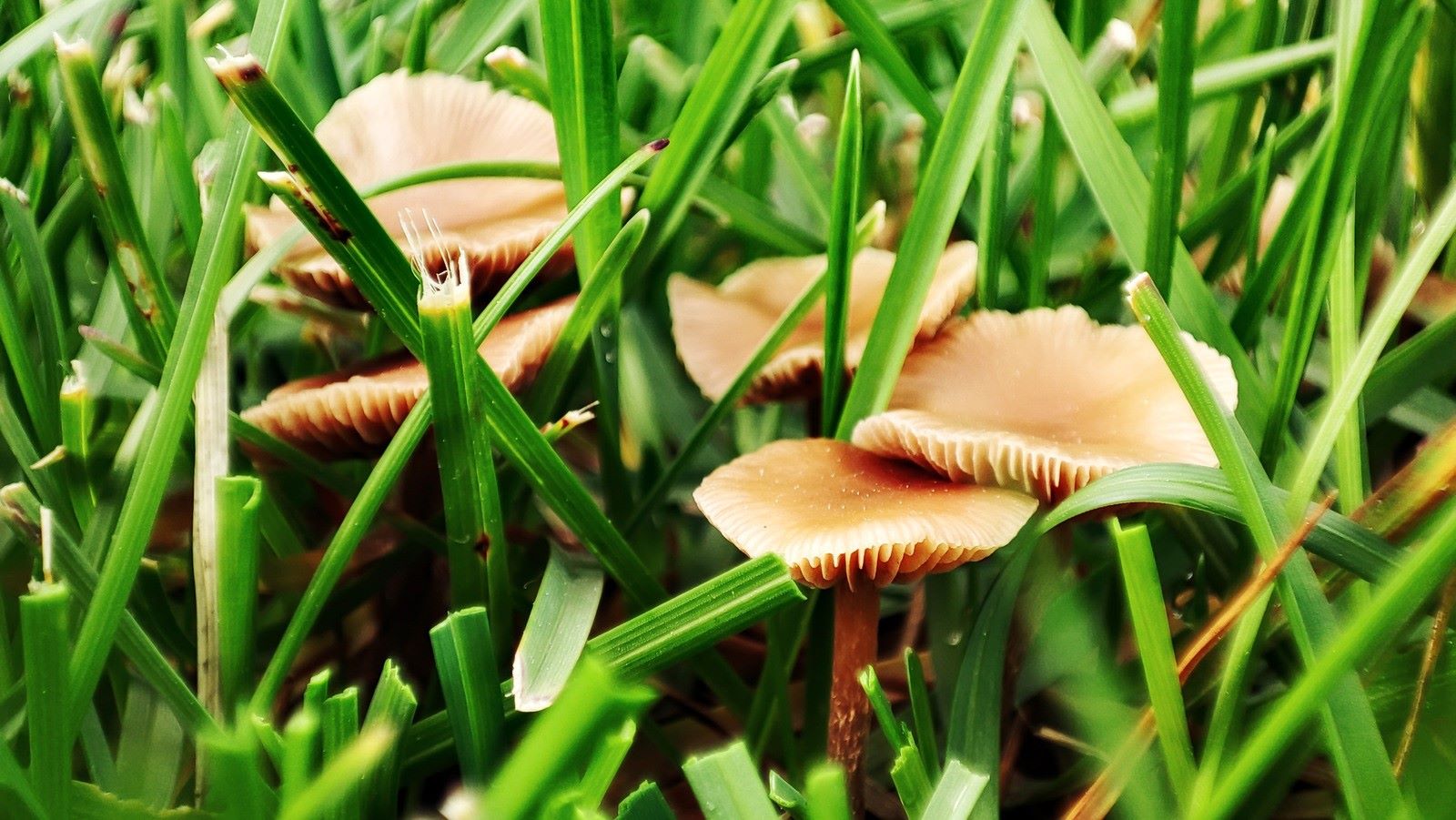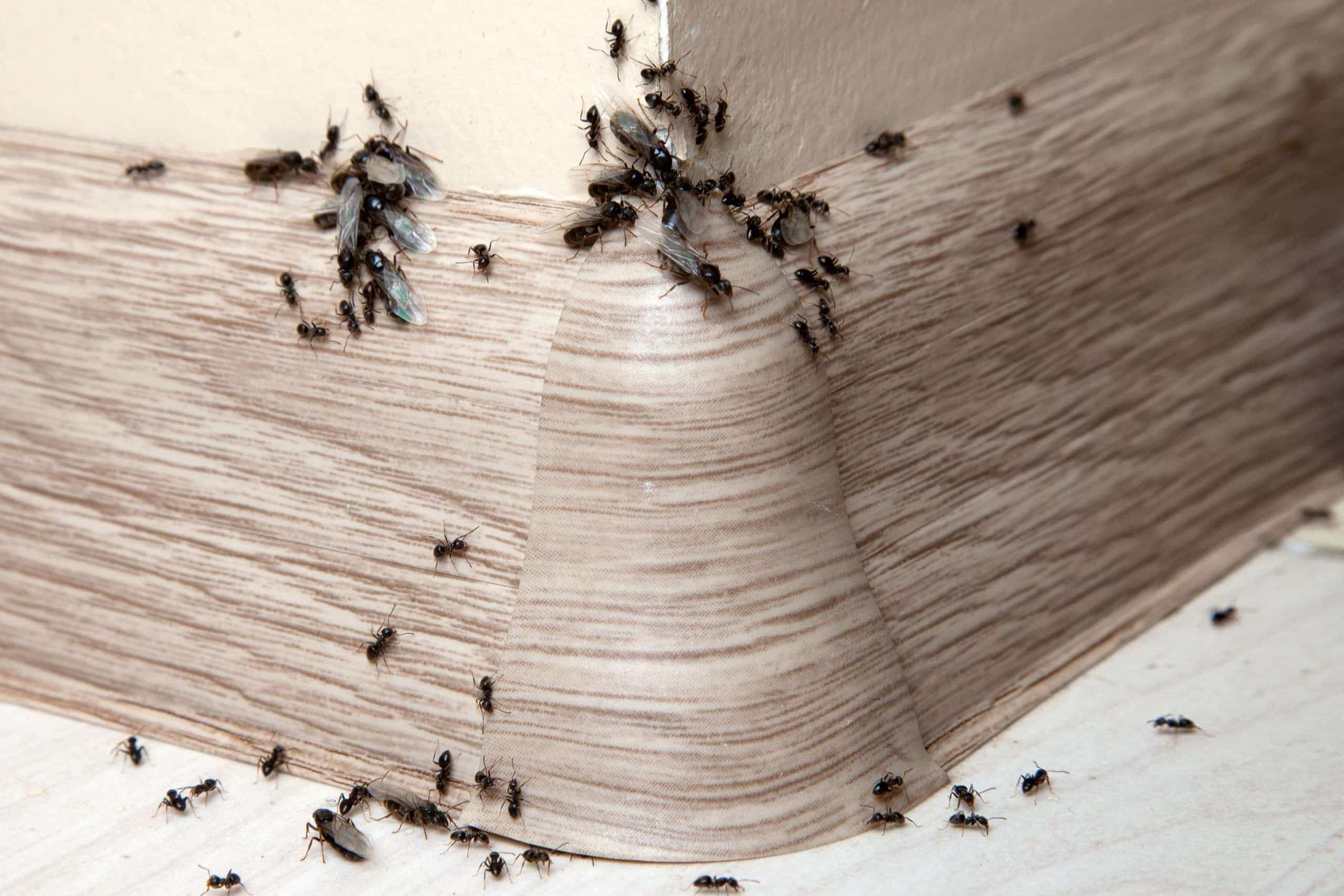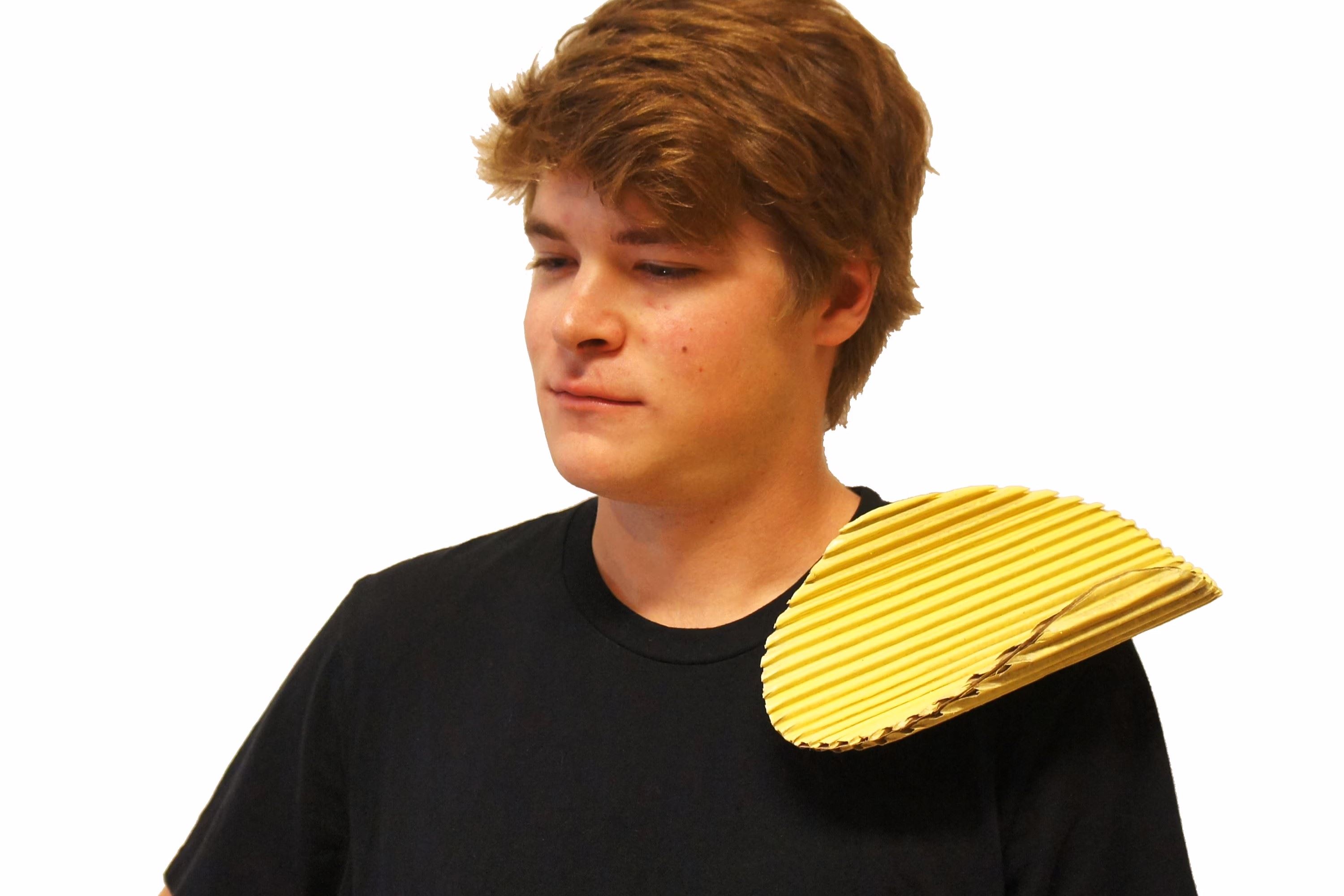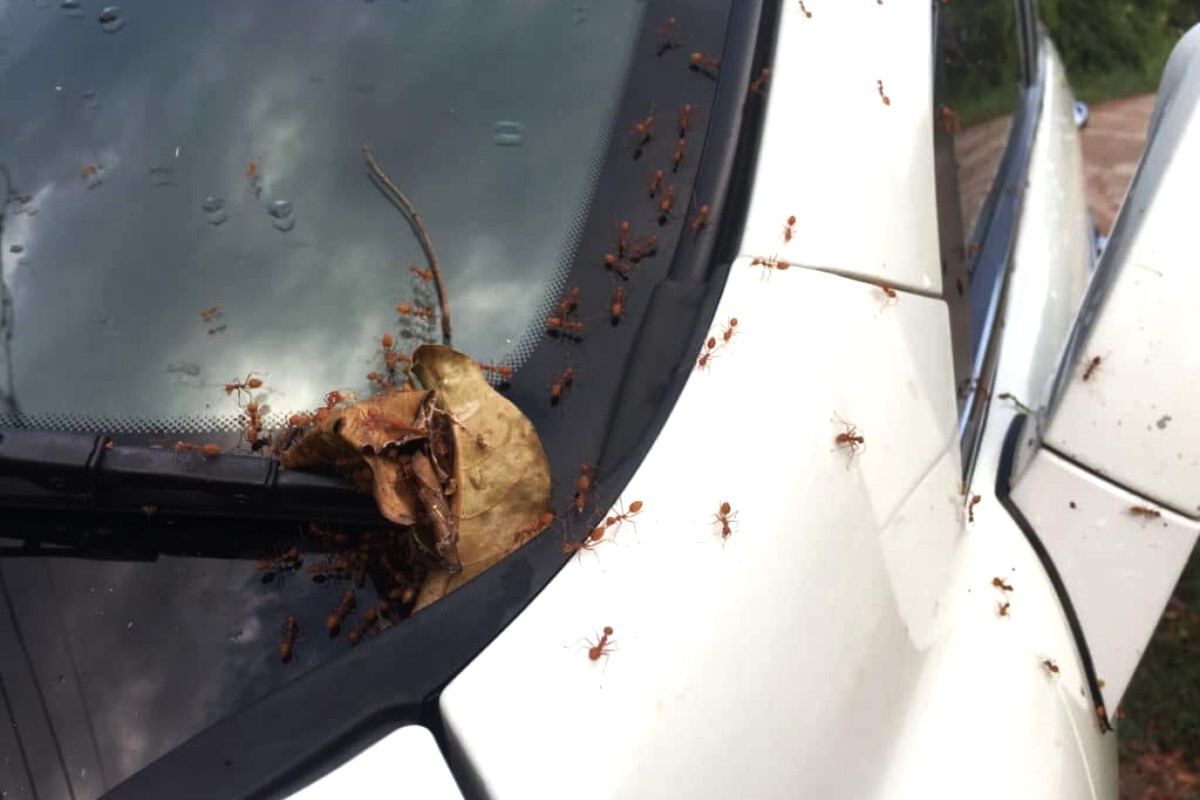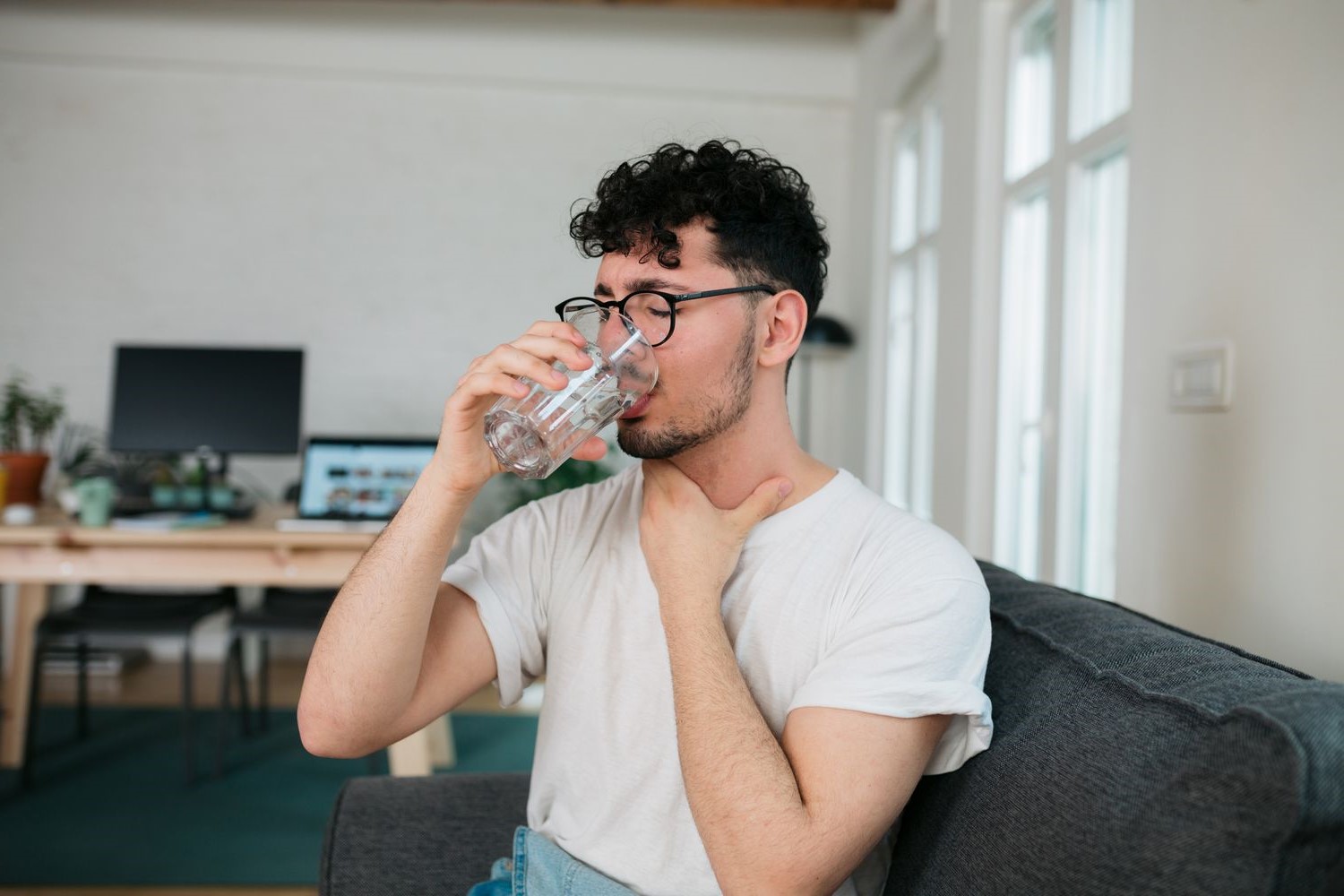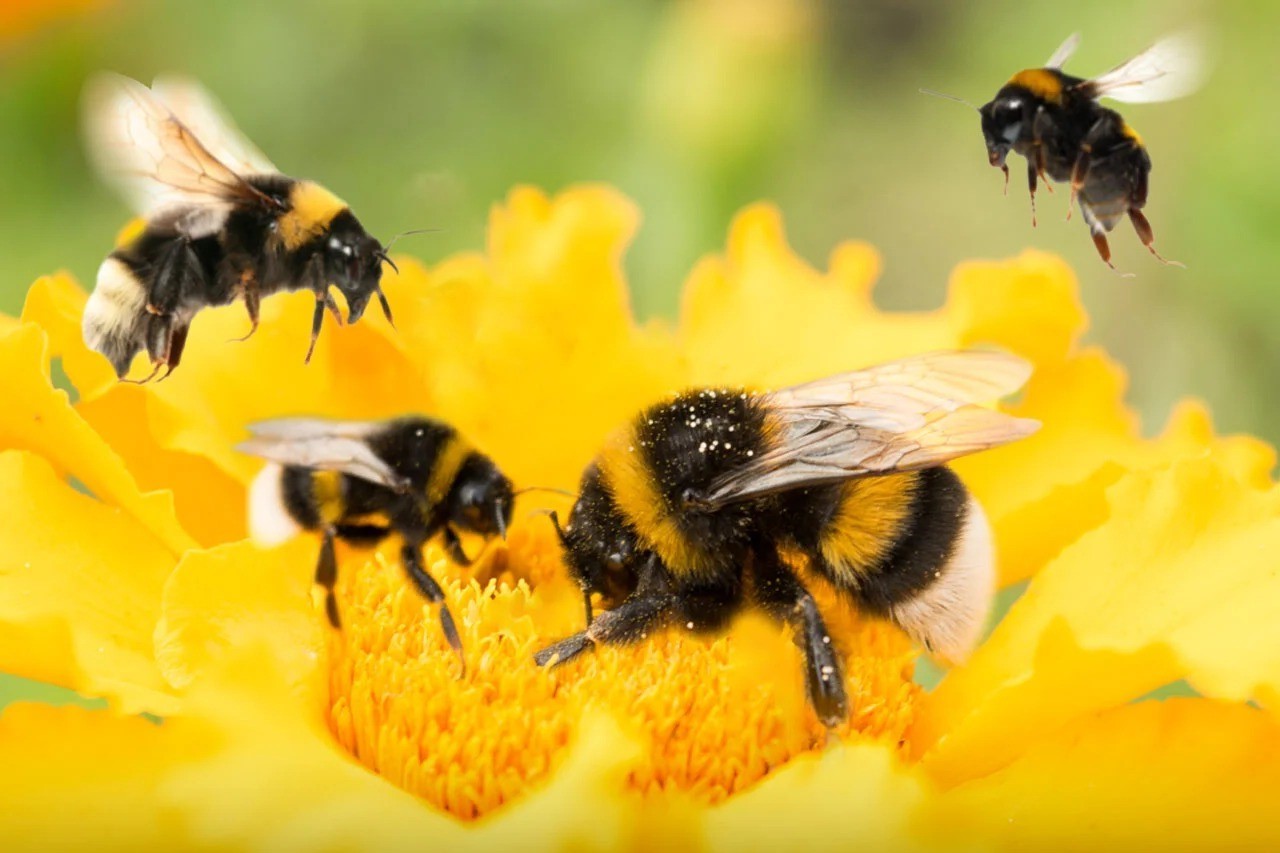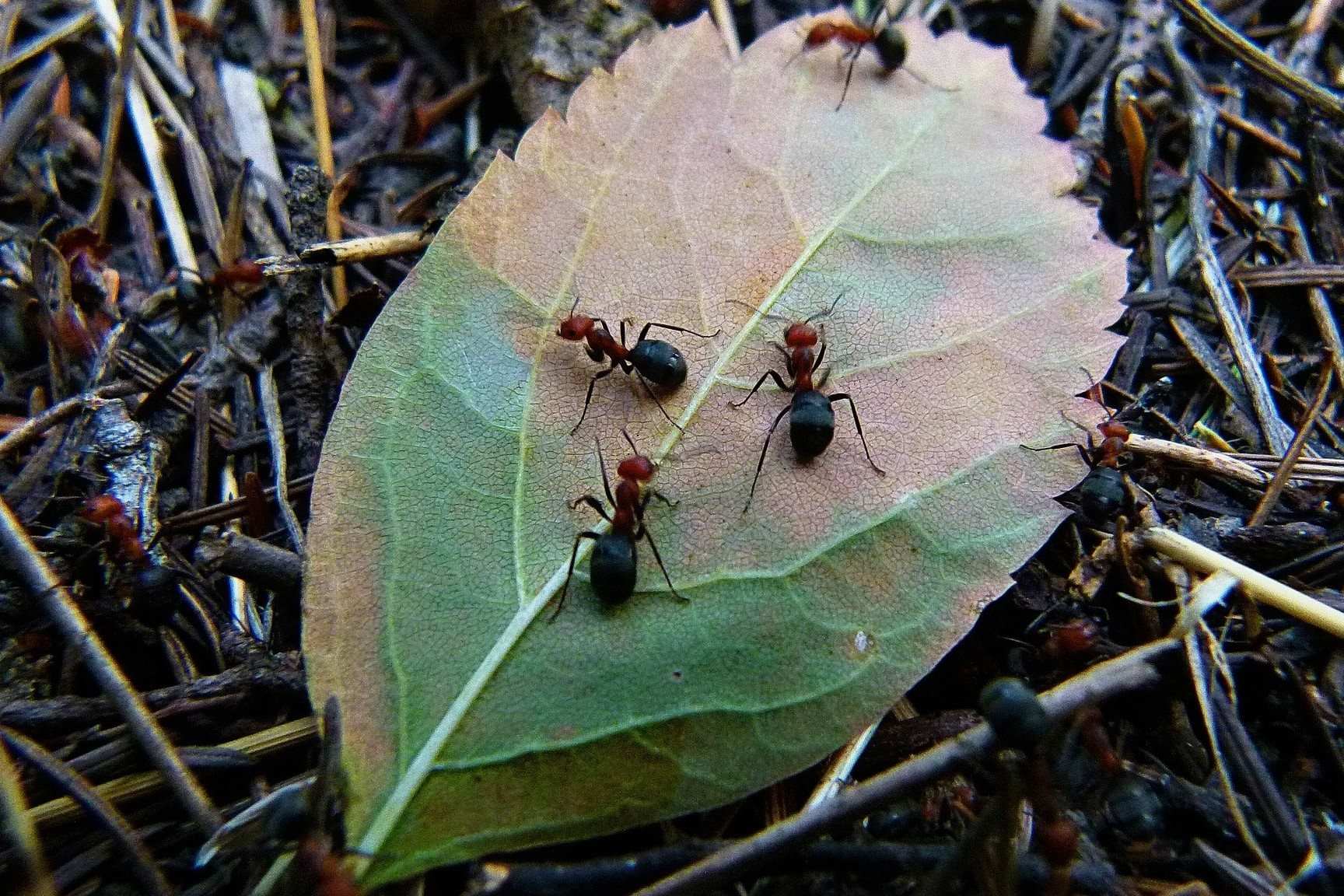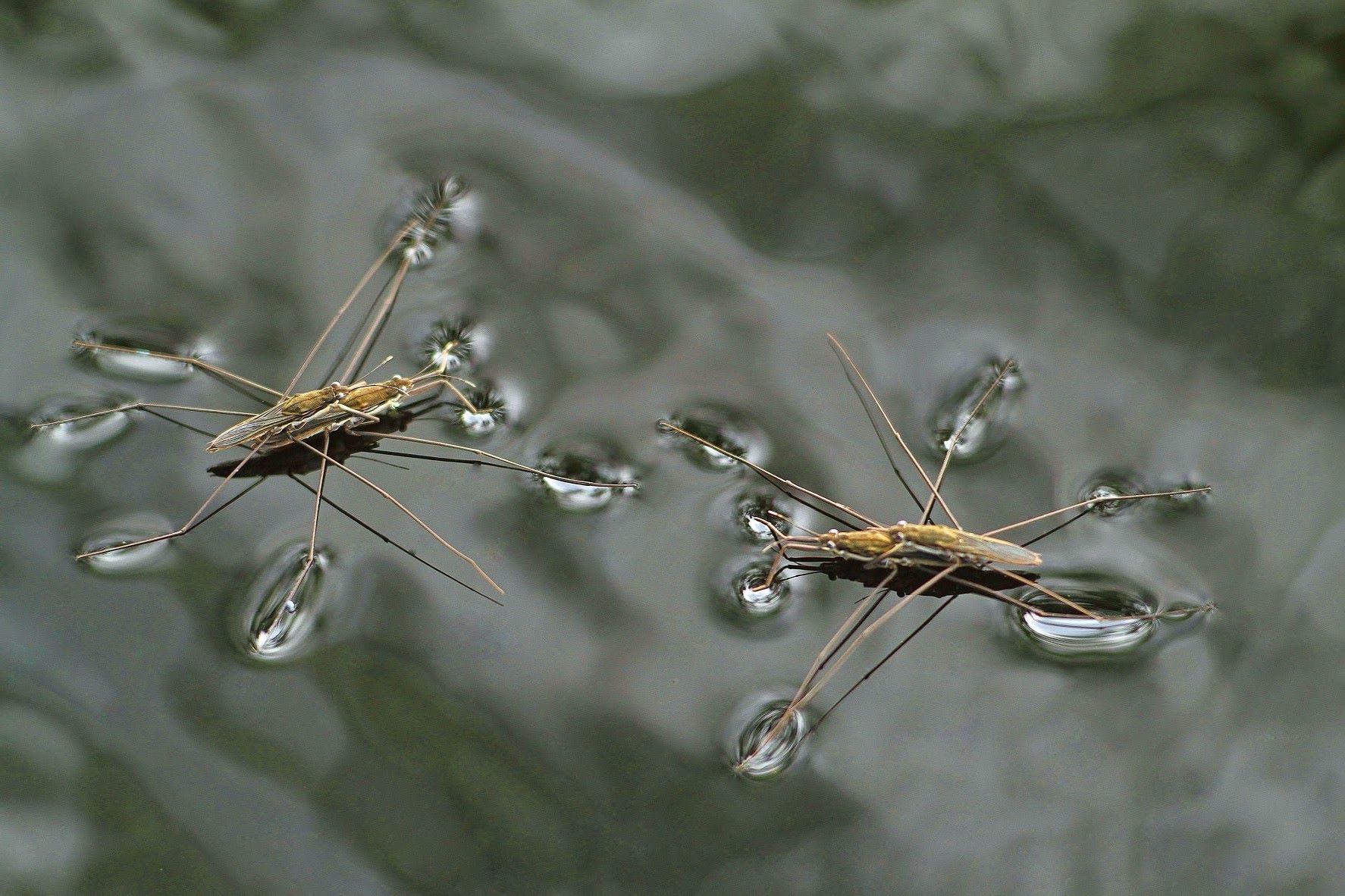Home>Pets & Animals>How To Get Rid Of Yellowjackets
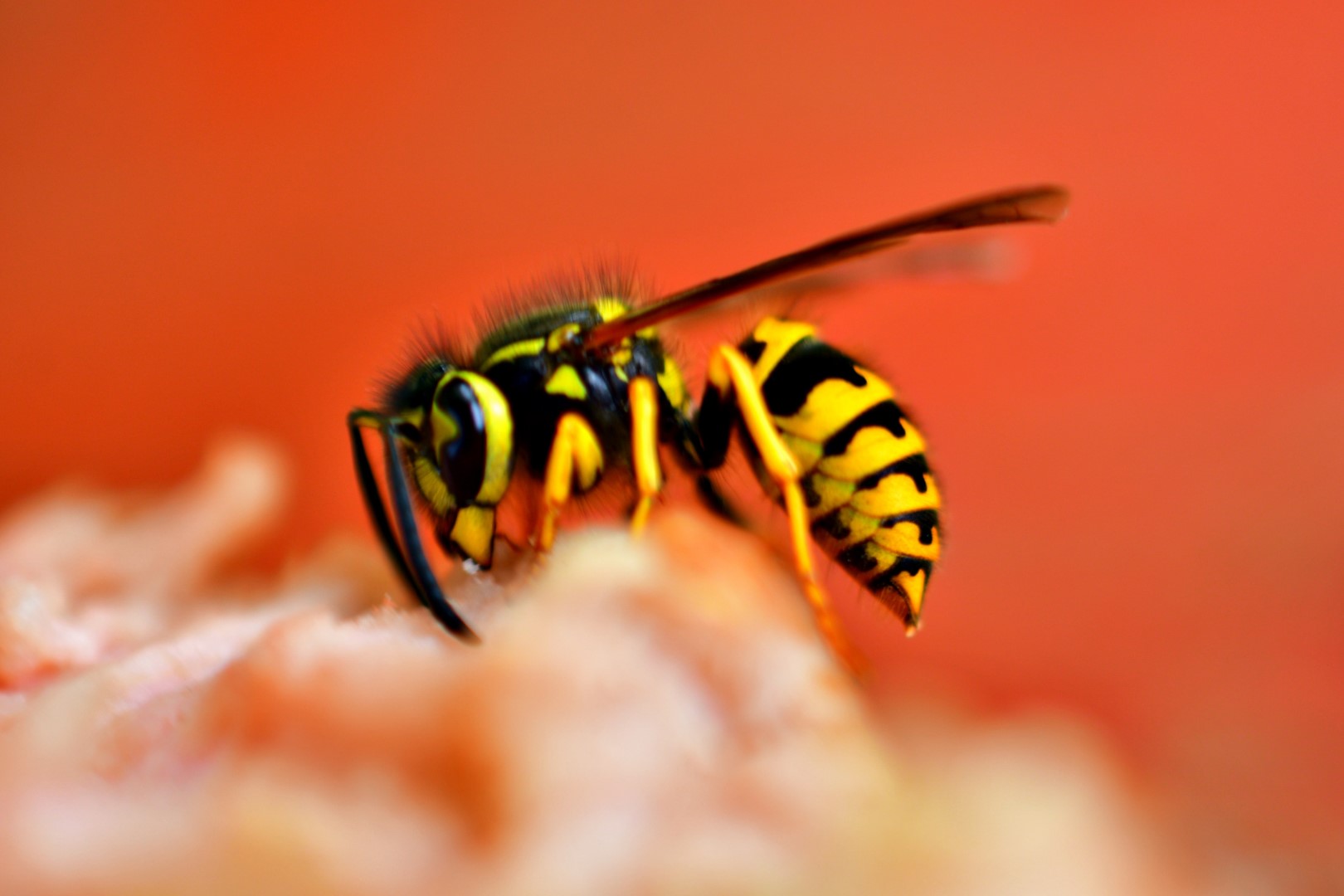

Pets & Animals
How To Get Rid Of Yellowjackets
Published: March 7, 2024
Learn effective methods to safely remove yellowjackets from your property and protect your pets and animals from potential stings. Expert tips and advice for a pest-free environment.
(Many of the links in this article redirect to a specific reviewed product. Your purchase of these products through affiliate links helps to generate commission for Noodls.com, at no extra cost. Learn more)
Table of Contents
Introduction
Yellowjackets, known for their distinctive yellow and black markings, are a common sight during the warmer months. These aggressive insects belong to the Vespula and Dolichovespula genera and are often mistaken for bees due to their similar appearance. However, unlike bees, yellowjackets are equipped with smooth stingers, allowing them to sting multiple times, making them a formidable nuisance.
Encountering yellowjackets can quickly turn a pleasant outdoor experience into a painful ordeal. Their territorial nature and tendency to swarm when threatened pose a significant risk to humans and pets. As such, understanding how to identify, prevent, and eliminate these pests is crucial for maintaining a safe and enjoyable environment.
In this comprehensive guide, we will delve into the various aspects of dealing with yellowjackets, from identifying their presence to implementing natural and chemical solutions for their removal. By gaining insight into their behavior and employing effective strategies, you can protect yourself and your surroundings from the disruptions caused by these aggressive insects. Let's explore the world of yellowjackets and learn how to effectively manage their presence.
Read more: How To Get Rid Of Sugar Ants
Identifying Yellowjackets
Yellowjackets, belonging to the Vespula and Dolichovespula genera, are easily recognizable by their distinctive yellow and black markings. These aggressive insects are often mistaken for bees due to their similar appearance, but they possess several unique characteristics that set them apart.
Physical Appearance
Yellowjackets typically measure around 10-16mm in length and have a slender, defined waist. Their bodies are adorned with alternating bands of bright yellow and deep black, giving them a striking appearance. Unlike bees, yellowjackets lack the dense body hair commonly associated with their counterparts, contributing to their sleek and slightly glossy appearance.
Nest Characteristics
Identifying yellowjacket nests is crucial for managing their presence. These insects construct their nests from a papery material, which they create by chewing wood fibers and mixing them with saliva. The nests are often found in underground burrows, but they can also be located in wall voids, attics, and other sheltered areas. The nests have a distinctive, layered structure and can grow to the size of a basketball or larger as the colony expands.
Behavior
Understanding yellowjacket behavior is essential for identifying their presence. These insects are highly social and live in colonies, with a single queen leading the group. During the warmer months, yellowjackets become more active and aggressive, particularly when their nest is disturbed. They are known for their territorial nature and will vigorously defend their nest if they perceive a threat, often leading to painful stings.
Read more: How To Get Rid Of Grasshoppers
Flight Patterns
Observing the flight patterns of yellowjackets can aid in their identification. These insects have a distinctive flight style, characterized by rapid, darting movements as they navigate their surroundings in search of food and nesting materials. Their flight patterns often involve quick, direct movements, setting them apart from other flying insects.
By familiarizing yourself with the physical attributes, nesting habits, behavior, and flight patterns of yellowjackets, you can effectively identify and differentiate them from other stinging insects. This knowledge serves as a valuable foundation for implementing targeted strategies to manage and eliminate their presence, safeguarding your outdoor experiences from potential disruptions and hazards.
Understanding Yellowjacket Behavior
Yellowjackets exhibit complex and fascinating behavior patterns that play a crucial role in their survival and interactions with their environment. By gaining insight into their behavior, we can better understand their tendencies and develop effective strategies for managing their presence.
Social Structure
Yellowjackets are highly social insects, living in colonies that consist of three primary castes: queens, workers, and males. The queen, responsible for reproduction and colony leadership, initiates the formation of a new colony. As the sole egg-layer, the queen's primary role is to ensure the growth and sustainability of the colony. Workers, sterile females, assume various responsibilities, including foraging for food, caring for the young, and defending the nest. Males, produced during specific periods, serve the sole purpose of mating with new queens.
Nest Defense
Yellowjackets are fiercely protective of their nests, displaying aggressive behavior when they perceive a threat. Disturbances near their nesting sites can trigger a swift and coordinated response from the colony, leading to a swarm of defensive yellowjackets. This defensive behavior is a survival mechanism aimed at safeguarding the queen, brood, and food resources within the nest. When faced with a potential threat, such as a perceived intruder or disturbance to the nest, yellowjackets emit alarm pheromones, signaling other colony members to join in the defense.
Read more: How To Get Rid Of Cowlicks
Foraging and Feeding
Yellowjackets are opportunistic feeders, displaying a diverse diet that includes nectar, fruits, and other sugary substances. Additionally, they are attracted to proteins, making them frequent visitors to outdoor gatherings where food is present. Their foraging behavior is driven by the need to sustain the colony, particularly during the larval development stages when protein-rich food sources are essential for the young. This foraging behavior often brings them into close proximity with humans, leading to potential conflicts.
Seasonal Activity
The behavior of yellowjackets varies throughout the year, influenced by seasonal changes and environmental factors. During the spring, the queen emerges from hibernation and begins the process of establishing a new colony. As the weather warms, the colony expands, and worker numbers increase, leading to heightened foraging activity. In late summer and early fall, the colony's focus shifts to producing new queens and males for mating, marking the end of the annual cycle.
Understanding the intricate behavior of yellowjackets provides valuable insights into their motivations and responses to different stimuli. By recognizing their social structure, defensive instincts, foraging habits, and seasonal activity patterns, we can develop proactive measures to minimize potential conflicts and effectively manage their presence in our surroundings.
Prevention Methods
Implementing proactive prevention methods is essential for minimizing the risk of yellowjacket encounters and nest establishment in your surroundings. By adopting these strategies, you can create an environment that is less attractive to these aggressive insects, reducing the likelihood of conflicts and stings.
Sanitation and Food Management
Maintaining proper sanitation practices is crucial for deterring yellowjackets. Ensure that outdoor eating areas, such as picnic spots and patios, are kept clean and free of food debris. Promptly dispose of food scraps and spills, as these can attract yellowjackets in search of sugary or protein-rich food sources. Additionally, tightly seal garbage cans and compost bins to prevent odors from attracting foraging insects.
Read more: How To Get Rid Of Toilet Ring
Seal Potential Entry Points
Inspect your property for potential entry points that could provide access to nesting sites for yellowjackets. Seal any gaps, cracks, or openings in walls, roofs, and outdoor structures to prevent these insects from establishing nests in sheltered areas. Pay particular attention to eaves, vents, and other openings that may serve as attractive nesting locations.
Nest Removal
Regularly inspect your property for signs of yellowjacket nests, especially during the early spring and summer months. If a nest is discovered, exercise caution and consider seeking professional assistance for its safe removal. Promptly addressing newly established nests can prevent the escalation of yellowjacket activity and reduce the likelihood of encountering aggressive colonies.
Landscape Maintenance
Keep your outdoor landscape well-maintained to minimize potential nesting sites for yellowjackets. Trim overgrown vegetation, particularly near structures and gathering areas, to eliminate potential nesting locations. Additionally, promptly address any decaying wood or debris, as these materials can attract yellowjackets seeking nesting materials.
Educate and Raise Awareness
Educating family members, guests, and neighbors about yellowjacket behavior and prevention strategies can contribute to a collective effort in minimizing their presence. Encourage individuals to be mindful of their surroundings and to promptly report any signs of yellowjacket activity or nest sightings. By raising awareness, you can foster a community-wide approach to yellowjacket prevention and safety.
By implementing these proactive prevention methods, you can significantly reduce the likelihood of yellowjacket encounters and nest establishment in your outdoor spaces. These strategies not only contribute to a safer environment for you and your family but also promote a harmonious coexistence with the natural world around you.
Read more: How To Get Rid Of Old Grill
Natural Remedies for Getting Rid of Yellowjackets
When dealing with yellowjackets, natural remedies offer effective and environmentally friendly solutions for managing their presence. These methods aim to deter and eliminate yellowjackets without resorting to chemical interventions, promoting a balanced approach to pest control. By incorporating natural remedies into your pest management strategies, you can address yellowjacket concerns while minimizing potential harm to the surrounding ecosystem.
Homemade Traps
Creating homemade traps is a popular and cost-effective method for capturing and reducing yellowjacket populations. One common trap involves using a plastic bottle filled with a sweet liquid, such as fruit juice or soda, to attract and trap foraging yellowjackets. By strategically placing these traps in outdoor areas away from frequented spaces, you can effectively reduce the number of yellowjackets in your immediate vicinity.
Essential Oils
Certain essential oils, such as clove, geranium, and peppermint oil, are known for their repellent properties against yellowjackets. By diluting these oils with water and spraying the solution in areas prone to yellowjacket activity, you can create a natural deterrent. Additionally, placing cotton balls soaked in essential oils near potential nesting sites can discourage yellowjackets from establishing colonies in those areas.
Soap and Water Solution
A simple yet effective natural remedy involves using a soap and water solution to disrupt yellowjacket activity. By mixing liquid dish soap with water in a spray bottle, you can create a non-toxic insecticidal spray. When applied directly to yellowjackets or their nests, this solution can immobilize and suffocate the insects, providing a safe and practical method for managing their presence.
Read more: How To Get Rid Of Ground Bees
Vinegar and Water Mixture
Vinegar, known for its versatile household applications, can also serve as a natural deterrent for yellowjackets. By combining equal parts of vinegar and water in a spray bottle, you can create a solution that repels these insects. Spraying this mixture around potential entry points and nesting sites can discourage yellowjackets from establishing colonies in those areas.
Plant-Based Repellents
Certain plants, such as mint, eucalyptus, and wormwood, possess natural repellent properties that can deter yellowjackets. Cultivating these plants in outdoor spaces can help create a natural barrier against these insects. Additionally, placing potted versions of these plants in key areas can contribute to a proactive approach to yellowjacket management.
By incorporating these natural remedies into your pest management practices, you can effectively address yellowjacket concerns while minimizing the impact on the surrounding environment. These methods offer practical and sustainable solutions for reducing yellowjacket populations and creating a safer outdoor environment for you and your family.
Chemical Solutions for Removing Yellowjackets
When natural remedies and preventive measures are insufficient in addressing yellowjacket infestations, chemical solutions can provide effective means of removing these aggressive insects. It is important to approach the use of chemical interventions with caution and adhere to safety guidelines to minimize environmental impact and ensure the well-being of humans and pets.
Insecticidal Sprays
Insecticidal sprays formulated specifically for stinging insects, including yellowjackets, offer targeted and rapid elimination of active colonies. These aerosol sprays are designed to deliver a potent insecticidal effect upon contact, quickly incapacitating and killing the insects. When using insecticidal sprays, it is essential to apply them directly to the nest entrance during the evening or early morning when yellowjackets are less active. This approach maximizes the effectiveness of the treatment while minimizing the risk of encountering defensive yellowjackets.
Read more: How To Get Rid Of Split Ends
Dust Insecticides
Dust insecticides, such as those containing carbaryl or permethrin, can be applied directly to yellowjacket nests to achieve long-lasting control. These fine powders are designed to adhere to the bodies of the insects as they come into contact with the treated surfaces, effectively disrupting their respiratory systems and leading to mortality. When using dust insecticides, it is crucial to apply the product according to the manufacturer's instructions and take precautions to avoid inhalation or skin contact.
Foam-Based Products
Foam-based insecticides offer a convenient and targeted approach to treating yellowjacket nests, particularly in hard-to-reach or enclosed spaces. These products expand upon application, penetrating the nesting site and delivering a lethal dose of insecticidal ingredients. The foam's expansion properties enable it to reach deep within the nest, ensuring comprehensive coverage and effective control of the yellowjacket colony. When using foam-based products, it is important to follow application guidelines and wear appropriate protective gear to minimize exposure.
Professional Pest Control Services
In cases where yellowjacket infestations pose significant challenges or safety concerns, seeking professional pest control services is advisable. Pest control professionals possess the expertise, specialized equipment, and access to professional-grade insecticides necessary for safely and effectively addressing yellowjacket infestations. These professionals can conduct thorough inspections, identify nesting sites, and implement targeted treatment strategies to eliminate yellowjacket colonies while prioritizing safety and environmental responsibility.
When utilizing chemical solutions for removing yellowjackets, it is essential to prioritize safety, adherence to product instructions, and consideration for the surrounding environment. By approaching chemical interventions responsibly and in conjunction with preventive measures, you can effectively manage yellowjacket infestations and create a safer outdoor environment for yourself, your family, and your pets.
Calling in Professional Help
When facing persistent or challenging yellowjacket infestations, seeking professional assistance from pest control experts can provide a decisive and effective solution. Professional pest control services offer specialized knowledge, advanced equipment, and targeted treatment options to address yellowjacket colonies while prioritizing safety and environmental responsibility.
Pest control professionals possess the expertise to conduct thorough inspections of properties, identifying nesting sites and assessing the extent of yellowjacket infestations. Their in-depth understanding of yellowjacket behavior and nesting habits enables them to develop tailored strategies for efficient colony elimination.
Utilizing professional-grade insecticides and application methods, pest control experts can safely and effectively treat yellowjacket nests, mitigating the risk of stings and ensuring comprehensive control of the infestation. By leveraging their experience and access to specialized products, they can implement targeted interventions that minimize environmental impact while delivering impactful results.
In addition to targeted treatments, pest control professionals prioritize safety throughout the removal process, employing protective gear and adhering to industry best practices to minimize risks to humans, pets, and the surrounding ecosystem. Their commitment to safety and responsible pest management ensures that the removal of yellowjacket colonies is conducted with the utmost care and consideration.
Furthermore, pest control services offer valuable guidance on preventive measures to deter future yellowjacket infestations, empowering property owners with the knowledge and strategies to minimize the risk of recurrence. By leveraging their expertise, individuals can proactively safeguard their outdoor spaces from potential yellowjacket disruptions, fostering a harmonious coexistence with the natural environment.
Ultimately, calling in professional help for yellowjacket infestations provides a comprehensive and reliable solution, addressing the challenges posed by these aggressive insects with expertise, precision, and a commitment to safety and environmental responsibility. By entrusting the management of yellowjacket infestations to pest control professionals, individuals can regain peace of mind and enjoy a safer, more secure outdoor environment.
Read more: How To Get Rid Of Neck Hump
Conclusion
In conclusion, effectively managing yellowjacket infestations requires a comprehensive approach that encompasses identification, prevention, and targeted removal strategies. By understanding the distinctive characteristics and behavior of yellowjackets, individuals can proactively safeguard their outdoor spaces from potential conflicts and stings. The physical appearance, nesting habits, and territorial nature of yellowjackets serve as key indicators for identifying their presence, enabling property owners to take proactive measures to minimize the risk of encounters.
Implementing preventive methods, such as sanitation practices, sealing potential entry points, and regular nest inspections, plays a pivotal role in deterring yellowjackets and reducing the likelihood of nest establishment. By maintaining a clean and well-maintained outdoor environment, individuals can create an inhospitable setting for yellowjackets, minimizing the attractiveness of their surroundings.
Furthermore, incorporating natural remedies and chemical solutions, when necessary, provides effective means of addressing yellowjacket infestations while prioritizing environmental responsibility and safety. Homemade traps, essential oils, and plant-based repellents offer sustainable options for reducing yellowjacket populations, while insecticidal sprays and professional pest control services deliver targeted and decisive interventions for colony removal.
Calling in professional help from pest control experts can provide individuals with the expertise and resources necessary to safely and effectively address persistent or challenging yellowjacket infestations. By leveraging the specialized knowledge and advanced treatment options offered by professional services, property owners can achieve comprehensive control of yellowjacket colonies while prioritizing safety and environmental responsibility.
In essence, the successful management of yellowjacket infestations hinges on a proactive and informed approach that integrates preventive measures, natural remedies, and, when needed, professional intervention. By adopting these strategies and remaining vigilant in monitoring outdoor spaces, individuals can create a safer and more enjoyable environment, free from the disruptions and hazards posed by these aggressive insects. Through a combination of knowledge, preparedness, and targeted action, individuals can effectively coexist with the natural world while minimizing the impact of yellowjacket encounters.
